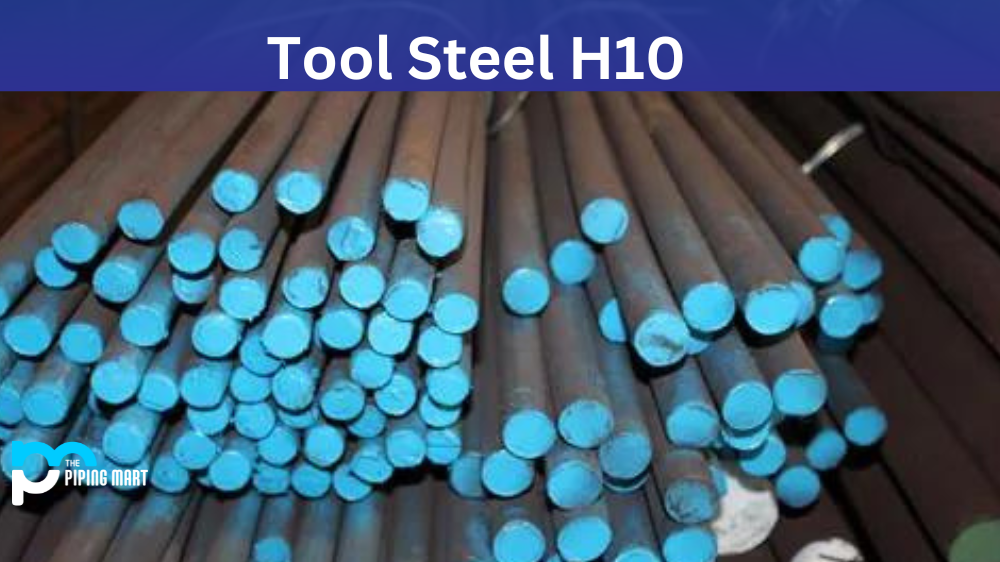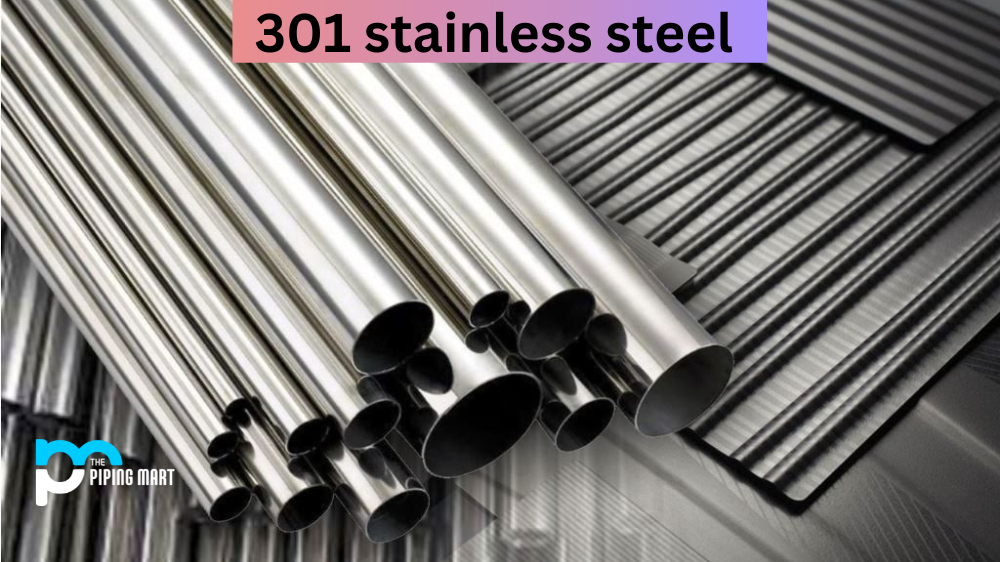Tool steel is an essential metal that is used in many different industries. Tool steel H10 is a type of tool steel specifically designed to be used in applications requiring superior strength, hardness, and wear resistance. This article will dive deeper into the composition, mechanical properties, physical properties, uses corrosion resistance, heat resistance, heat treatment, machining and Welding of tool steel H10.
H10 Tool Steel Composition
H10 Tool Steel – Chromium Hot-Work Steels (UNS T20810) is composed of chromium (Cr) 0.4%, vanadium (V) 0.3%, molybdenum (Mo) 0.2-0.5%, tungsten (W) 0.7-1%, cobalt (Co) 2%, manganese (Mn) 0.5%. All these elements work together to give tool steel H10 its superior strength and hardness compared to other types of steel.
| Element | Content (%) |
|---|---|
| C | 0.35-0.45 |
| Mn | 0.25-0.70 |
| Si | 0.80-1.20 |
| Cr | 3.00-3.75 |
| Ni | 0.3 |
| Mo | 2.00-3.00 |
| V | 0.25-0.75 |
| Cu | 0.25 |
| P | 0.03 |
| S | 0.03 |
H10 Tool Steel Mechanical Properties
H10 Tool Steel possesses excellent hardenability and wear resistance due to its high alloy content, which provides it with a high level of toughness and durability, even at extreme temperatures or pressures. It also has excellent shock absorption capabilities, which makes it perfect for applications where the metal must withstand sudden impacts or changes in temperature or pressure without breaking or cracking.
| Properties | Metric | Imperial |
|---|---|---|
| Hardness, Rockwell C (air cooled from 1024°C and double tempered; 649°C temper temperature) | 41 | 41 |
| Hardness, Rockwell C (air cooled from 1024°C and double tempered;149°C temper temperature) | 58 | 58 |
| Modulus of elasticity | 207 GPa | 30000 ksi |
| Machinability (1% carbon steel) | 90.0 – 95.0% | 90.0 – 95.0% |
| Poisson’s ratio | 0.27-0.30 | 0.27-0.30 |
H10 Tool Steel Physical Properties
The physical properties of tool steel H10 are determined by its chemical composition and heat treatment process. In terms of its physical characteristics, tool steel H10 can be described as having medium hardness but excellent dimensional stability and tensile strength when appropriately hardened through heat treatment processes such as quenching followed by tempering at lower temperatures for more excellent ductility and malleability if necessary for certain applications such as machining or forming operations where flexibility is needed along with strength and hardness.
| Properties | Metric | Imperial |
|---|---|---|
| Density | 7.77 g/cm3 | 0.281 lb/in3 |
H10 Tool Steel Thermal Properties
| Properties | Metric | Imperial |
|---|---|---|
| Maximum service temperature, air | 482°C | 900°F |
H10 Tool Steel Equivalents
- AFNOR 32 DCV 28
- DIN 1.2365
- ASTM A681
- FED QQ-T-570
- UNS T20810
H10 Tool Steel Uses
Tool steel H10 can be used in a variety of applications, including automotive parts like engine valves, gears and shafts; hand tools like knives; medical instruments such as scissors; industrial parts like punches; cutting tools like drills; aerospace parts such as landing gear components; power tools like saw blades; military equipment such as firearms components; industrial machinery components like bearings; agricultural implements such as plowshares; food processing machines like slicers and grinders; oilfield tools like drill bits; mining tools such as picks and shovels; fasteners like screws and bolts and much more!
Corrosion Resistance
With proper care given to prevent it from rusting or corroding due to moisture exposure or contact with corrosive chemicals/materials, tool steel h10 can provide superior corrosion protection in most industrial environments over extended periods compared to other types of steel, which may be more prone to surface corrosion due to their less resistant compositions or lack thereof protective treatments applied during manufacturing processes before being put into use at various sites around the world where corrosion protection is key for any successful operation.
Heat Resistance
Tool steel H10 is an extremely heat-resistant material commonly used in automotive manufacturing, aerospace, and industrial applications. It has exceptional wear resistance, toughness, and affordability, making it ideal for performing intense jobs like forging dies and tooling operations. Its superior heat resistance allows it to remain stable during extreme temperatures, which can be very beneficial for reducing stresses in larger parts. This strength also makes it great for vacuum furnaced applications and protecting molds from thermal damage. Tool steel H10 can stand up to the toughest jobs and is certainly worth considering when selecting the metals needed to get the job done.
Machining
Tool steel H10 machining is important in engineering and fabrication industries. It requires accuracy, attention to detail, and an in-depth understanding of the metalworking process to ensure parts are manufactured correctly and safely. Working with this type of metal can be challenging, but its strength makes it a desirable option for many engineering projects. Tool steel H10 is used for tools under high operating temperatures, such as extrusion dies and hot-forming tools for forging. Each machining operation has unique challenges, but the professionals working with this material have the skill to succeed. Through their knowledge, expertise, and experience, they are prepared for any task provided to them, no matter how difficult it may seem.
Welding
Tool Steel H10 welding is an involved and demanding process requiring utmost precision, as these materials must withstand some of the most extreme use cases. This type of Welding is often used in industrial, automotive, and aerospace projects. The quality of welds when dealing with tool steel can mean the difference between a design or component succeeding or failing in its operations. To ensure the best results, welders must understand their equipment and practice good technique while handling various challenges related to welding Tool Steel H10. A meticulous approach to preparations and following safety protocols are also essential for the successful Welding of this material.
Conclusion
Tool steel h10 is an incredibly useful material that can be used across multiple industries thanks to its superior strength, hardness, wear resistance and corrosion protection qualities when properly treated through heat treatment processes such as quenching followed by tempering at lower temperatures if necessary, for greater ductility/malleability depending on each application’s specific needs for optimal performance results – even in extreme temperatures or pressures it can still provide top-notch performance making it ideal for those who need reliable materials that won’t let them down no matter what the job throws at them!

Pipingmart is a B2B portal that specializes in metal, industrial and piping items. Additionally, we share the latest information and information about materials, products and various types of grades to assist businesses that are involved in this business.




